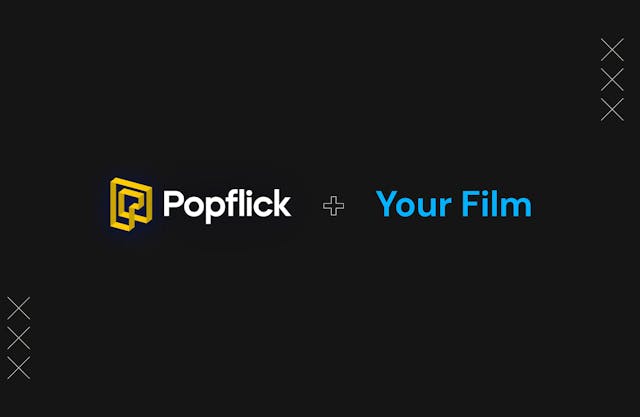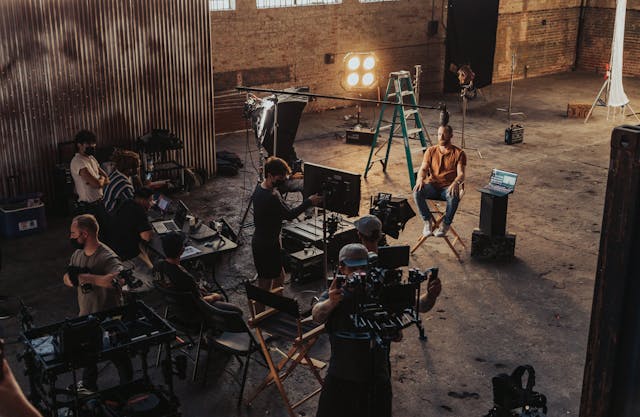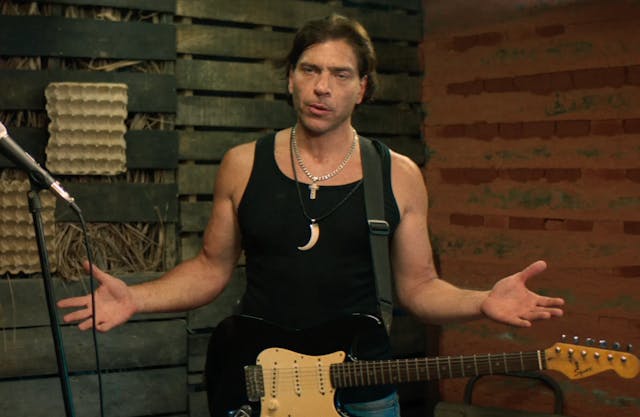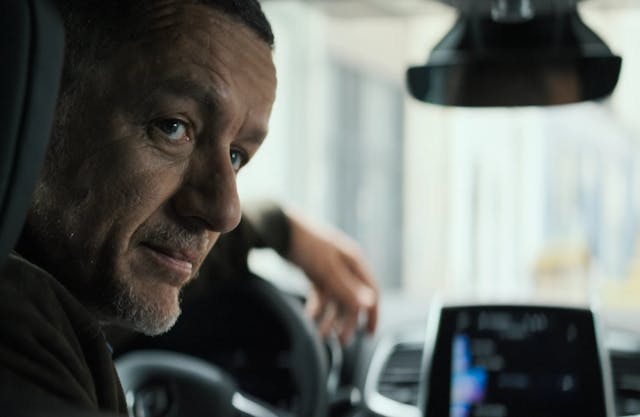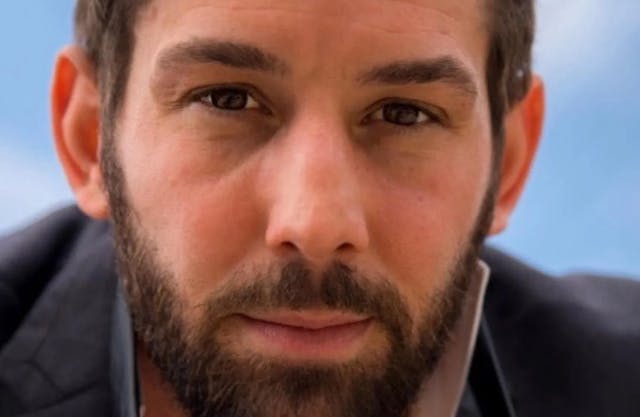What is Product Placement, and How It Can Help You to Make Your Movie

It may sound grating to film snobs, but product placement is unavoidable in filmmaking. Most movies take place in a facsimile of the real world, where we see the same things we use in our daily lives. Product placement helps push the audience into suspending disbelief and accepting the fabrication as true—or at least something true enough to warrant your investment of time, attention, and emotion.
Think of product placement as a funding stream granted by the business of film production. It's a monetizable piece set dressing. If your movie has scenes where the characters drive from one place to another, you must shoot the actors inside a car. You could block the scene in such a way that makes the model and brand beside the point. But then again, you could be more overt about these characteristics and charge the carmaker for money to offset some of the production costs. Would you say “no” to it? Perhaps you can’t get cash, but the car maker loans you the necessary vehicles, saving you on rentals.
It may be unseemly to incur in advertising while engaging in an artistic endeavor, but remember that filmmaking is partly a business. European filmmakers may enjoy state-sponsored subsidies, but that resource is scarce, not to say non-existent. Also, American audiences are more comfortable with capitalism. We know everybody is selling something. If you are subtle enough, it will not poison the relationship between the audience and the movie.
Product Placement: a Co-Star for Sale!
Staying in the traffic lane, consider that one of the most popular franchises in the film industry turned product placement into news. In 1962, Sean Connery portrayed James Bond for the first time in “Dr. No.” Agent 007 blasted on the screen on board a Sunbeam Alpine, a sports car built by British carmaker Rootes Group. Since then, every movie in the series has stirred up anticipation over what set of wheels the star on duty will drive. Through 25 movies, Aston Martin is the brand with more co-starring roles. Producers Albert Broccoli and his heir, daughter Barbara, have turned the movies into virtual catalogs. Wristwatches, clothes, alcoholic beverages…it’s like everything you see onscreen is for sale. Each brand pays dearly for the privilege, and the movie gets extra publicity from associated campaigns.

Agent Billboard: Daniel Craig is the last in a long line of James Bonds selling upscale products. / Photo by Piotr Zajac ©, courtesy of Dreamstime.
There are three kinds of Product Placement, each with its particularities and imprint on the movie. Let's examine them one by one.
1. Screen Placement
Nobody complains about 007’s overt commercialism, but those movies are pure entertainment. Their artistic ambition moves between the boundaries of a formula refined over decades. Alas, you never heard Daniel Craig waxing poetically about the coolness of the car he drove onscreen. The sight of the vehicle and its emblem was enough. This modality is known as Screen Placement. Think of movies or series with scenes staged in an office setting, with Mac computers showing their Apple logo. Whatever the brand, if you see a post-it covering the area, you can be sure nobody signed a placement agreement before the cameras started to roll.

Aston Martin, as driven by James Bond!: Spotting the logos in the 007 adventures is a fun game for the whole family. / Photo by Benjamin Sibuet©, courtesy of Dreamstime.com
2. Script Placement
A script placement is more deliberate and overt. It springs during the screenwriting phase. The screenwriter, director, or producer - whoever holds creative power at the moment - decides that a particular brand name has to be prominently featured to warrant a verbal mention by the star. Sometimes, this is offensively gratuitous. You feel they shoehorned a commercial in the middle of a movie. Think of the Adam Sandler box-office hit “Big Daddy” (Dennis Duigan, 1999), where he bonds with his adopted son touting Macdonald’s expanded menu. The YouTube channel Laser Time has a hilarious video tracking all the hard-selling scenes in Sandler’s filmography, from “Billy Madison” (1995) to “Pixels” (2015) - time to do an update, folks -.
The Difficult Balance between Product Placement and Advertising
Sandlers’ comedies are rife with product placement, especially highlighting fast food joints, beer, and candies. The tone oscillates between ironic and unapologetic. At times, it verges into embarrassment. You feel bad for Al Pacino when, in "Jack & Jill" (Dugan, 2011), he performs a full musical number extolling the virtues of a Dunking Donuts “Duncaccino.” You can say the comedian knows his audience. It’s not hard to imagine the same public that turned his movies into box-office hits, making a queue to Hooters afterward. Ironically, when Sandler works in “serious” movies for critically acclaimed filmmakers, this particular income stream disappears. Incidentally, he is either a hired hand or shares control with others in these movies.
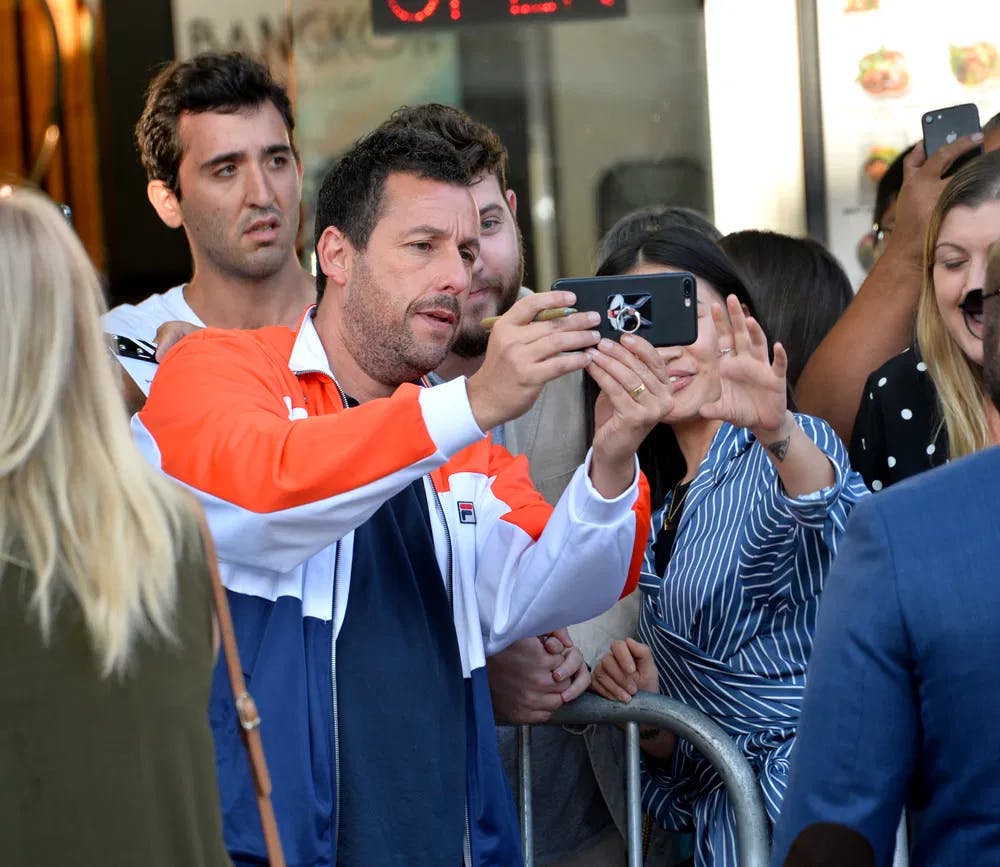
King of Product Placement: Adam Sandler virtually inserts commercial breaks in his movies. / Photo by Featureflash©, courtesy of Dreamstime.
I’m not putting down the comedian for his overt commercialism. It’s just a clear-cut example of product placement at work. You could think that popular entertainment is more vulnerable to the siren’s calls of ad executives, but you can find similar examples in critically acclaimed, serious movies. Case in point: “Cast Away.”
Plot Placement
Robert Zemeckis's 2000 drama starred Tom Hanks as a FedEx executive stranded on an island as the sole survivor of a plane crash. His sole companion is a Wilson volleyball, which, in his solitude, he treats as a friend he calls Wilson. Why not call it “Volley” or something like that? In a prime example of Script placement, delivering a package against all odds defines the movie's resolution. Fed Ex vehicles and logo are pervasive in the first act. Despite the accident, the company's portrayal is eminently positive.
Now, here comes a twist you were not expecting. Zemeckis and his partners provided these high-profile examples of product placement gratis. Neither FedEx nor Wilson paid a cent to figure so prominently in the movie, but they had, and did, grant permission to the filmmakers to use the brands in the film. So, we can say that Zemeckis was going for realism, not commerce. Also, “Cast Away” was not scrambling for funding. It was a 20th Century Fox - Dreamworks SKG production starring Tom Hanks at the height of box office power and critical adoration. Is it product placement if no money exchanges hands? I say yes. Think of it as charity from one millionaire business to another.
When Product Placement Goes Bad
One of the best bits in “Wayne’s World” (Penelope Spheeris, 1992) finds Mike Myers cramming five product placements in barely a minute of screen time. It’s a great way to have your cake and eat it, too. Or rather, your Pizza Hut. Witty produce placement shines, but bad product placement lands with a thud, taking you out of the movie.
If you start wondering how much money they got for doing it, they are doing it wrong.Case in point: “Nyad” (Chin & Vasarhelyi, 2023). The Netflix-produced biopic of long-distance swimmer Diana Nyad starts gracefully enough, with archival footage of the real person in talk shows talking about her goal of swimming from Florida to Cuba. After the credits, the movie jumps to 2020, with Annette Bening taking over as the embittered athlete. She could not complete the swim, and over the years, the failure weighed over her head. We see her running errands with her loyal best friend Bonnie (Jodie Foster) and bitching about her birthday. Bonnie loads a couple of shopping bags with the Petco logo visible in the trunk of her SUV. So far, so harmless. But then, when she opens the driver's door to get in, the following exchange takes place:
Bonnie: Ugh! I forgot the poop bags.
Diana: That was the whole reason you went to PETCO!
Bonnie: I know. But come on, we are going to get some steps in.
Girl, you could've said "pet store." Sure, we sometimes refer to products or places by their branding, but I'd venture that the exchange did not come from screenwriters Julia Cox and Diana Nyad's inspiration. Bonnie and Diana walk towards the store, and the movie cuts to a close-up of Bonnie’s dog. Awwww. The mutt is cute, but Bening and Foster deserve better. The scene brings a Pacino-for-Duncaccino level of mortification. Maybe part of their Oscar nominations were granted for being troopers and shilling with a straight face.
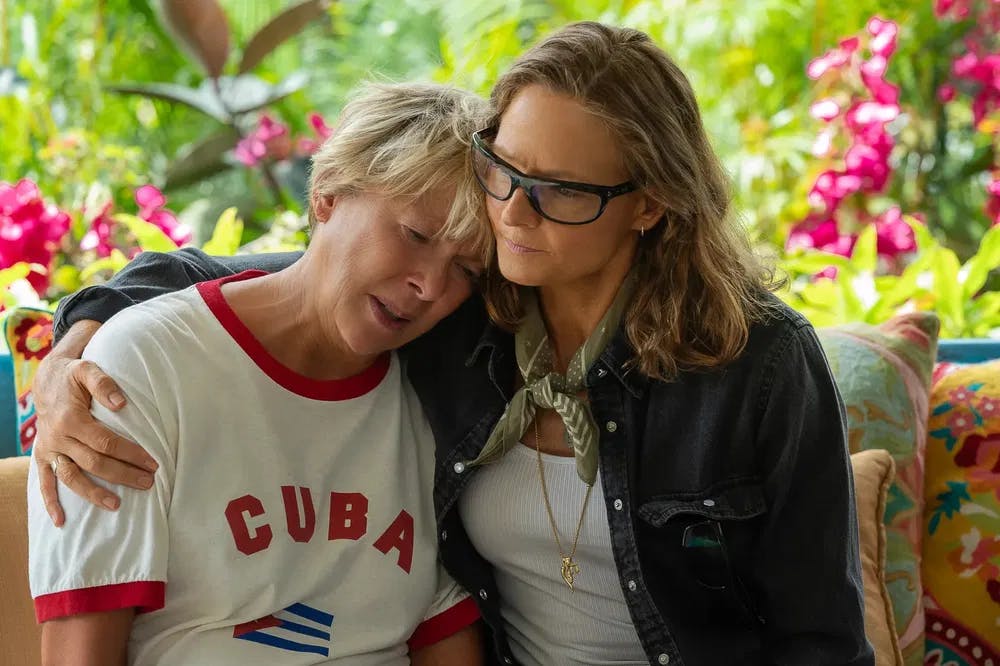
The PETCO coupon for poop bags was invalid!: Bening and Foster do some great acting shilling for a pet store in "Nyad" / Photo courtesy by Kimberly French, courtesy of Netflix.
How to Get Money, Goods, or Services from Product Placement
You would not need to insert advertising in your movie in a perfect world, but this is not an ideal world. If the choice is between not doing your film and giving a bit of screen time to a brand, the second option is the best. Maybe the movie does not depend on it, but it can help you get closer to your original vision. Either way, don’t feel bad and work on finding opportunities. If this trick is good enough for Adam Sandler and Netflix, it’s good enough for you.
Where to begin? Follow these simple steps:
- If you are writing a movie, consider opportunities to organically include brands and products without compromising your vision.
- If the script is complete, scan it for missed opportunities and rewrite it accordingly. Get more people to read it; they can find other chances.
- Make a list of the companies that hold the copyright of the products that interest you.
- Navigate to the website maintained by The Association of Entertainment Marketing Professionals. The organization aims to serve as a link between content producers and brands. Unfortunately, it requires a $360 annual membership.
- If you don’t have 360 dollars to invest in a one-year membership, you’ll have to do some investigating work yourself. Luckily, the internet has made this much easier. Alas, it is unlikely that big companies will answer a random request from an indie filmmaker. If that is the case, try to find another entry point that might be more friendly, like their ad agency.
- Look closer to home: Local businesses may be more willing and interested in supporting you in exchange for visibility and can serve as stewards of your project. For example, a local car dealer can contact the corporate overlords to approve a plan for product placement.
- Negotiate the boundaries of the collaboration and stick to the agreement. Know how far you want to go, including the product or the brand. Maybe a mention in the final credits will suffice. If they want more, consider if it is appropriate. Don’t give up creative control.
- Some brands may be willing to go beyond providing goods for props, wardrobe, and scene dressing. They can sponsor screenings, too. Shoot for the stars and pitch some cross-promotion initiatives. Don’t let James Bond take it all.
- As usual, consult a lawyer before signing anything.
- Once you establish a relationship with a brand, think of other ways to work together in the future. Pitch yourself to work on their ad campaigns and audiovisual needs, and use the money produced to underwrite your future movies.
Parting Words
The road of indie production is fraught with small triumphs and setbacks. You may put a lot of time and effort into courting businesses and brands, and it all may come to naught. If that is the case, don’t despair! You can always take shelter in artistic integrity. Like the fable of the Fox and the grapes…you never really wanted them! They are still green!
Want to get an email when we publish new content?
Subscribe today
